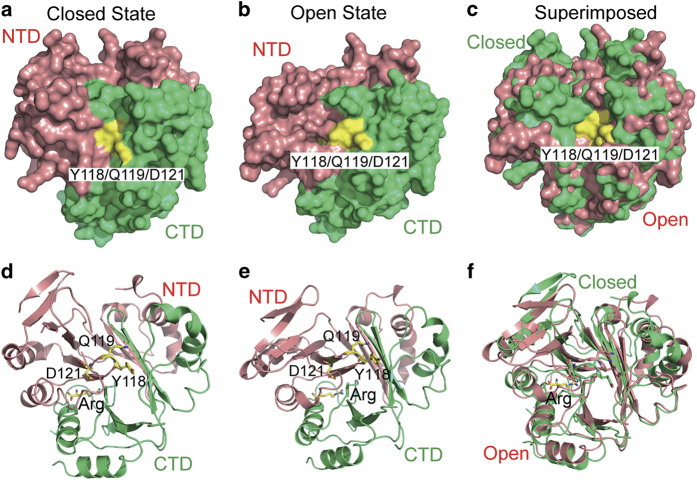Figure 5.
Normal mode analysis suggests that there exists an ‘open’-to-‘closed’ conformational switch for CASTOR1. (a, d) In the ‘closed’ state of CASTOR1 which resembles more closely to the crystal structure, the NTD and the CTD domains are more compressed against each other, and the GATOR2-binding residues are mostly buried. (b, e) In the ‘open’ state of CASTOR1, the NTD and the CTD domains are more separated, and the GATOR2-binding residues are exposed. (c, f) Superimposition of the 'closed’ and the ‘open’ states of CASTOR1. (a–c) Surface representations. (d–f) Cartoon representations.

